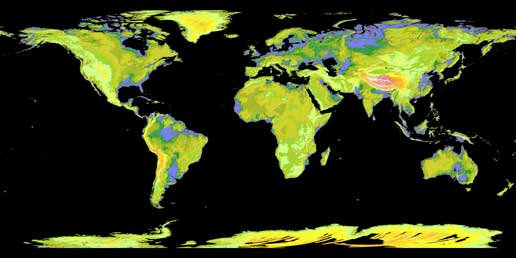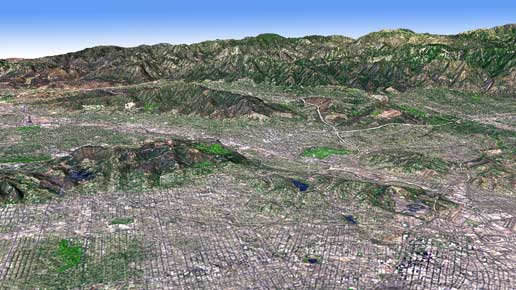[/caption]
Topographic maps are some of the most used and valuable maps for both government and the general public. Now, NASA and Japan have released a new digital topographic map of Earth Monday that covers more of our planet than ever before and was created from nearly 1.3 million individual stereo-pair images collected by the Japanese Advanced Spaceborne Thermal Emission and Reflection Radiometer, or ASTER, on board NASA’s Terra spacecraft. It is available online to users everywhere at no cost.
“This is the most complete, consistent global digital elevation data yet made available to the world,” said Woody Turner, ASTER program scientist at NASA Headquarters in Washington. “This unique global set of data will serve users and researchers from a wide array of disciplines that need elevation and terrain information.”
ASTER is one of five Earth-observing instruments launched on Terra in December 1999. ASTER acquires images from the visible to the thermal infrared wavelength region, with spatial resolutions ranging from about 50 to 300 feet.
According to Mike Abrams, ASTER science team leader at JPL the new topographic information will be of value throughout the Earth sciences and has many practical applications. “ASTER’s accurate topographic data will be used for engineering, energy exploration, conserving natural resources, environmental management, public works design, firefighting, recreation, geology and city planning, to name just a few areas,” Abrams said.
Click here for visualizations of the new ASTER topographic data.
Click here to download the ASTER global digital elevation model.
NASA and Japan’s Ministry of Economy, Trade and Industry, known as METI, developed the data set.

Previously, the most complete topographic set of data publicly available was from NASA’s Shuttle Radar Topography Mission. That mission mapped 80 percent of Earth’s landmass, between 60 degrees north latitude and 57 degrees south. The new ASTER data expands coverage to 99 percent, from 83 degrees north latitude and 83 degrees south. Each elevation measurement point in the new data is 98 feet apart.
The ASTER data fill in many of the voids in the shuttle mission’s data, such as in very steep terrains and in some deserts,” said Michael Kobrick, Shuttle Radar Topography Mission project scientist at the Jet Propulsion Laboratory. “NASA is working to combine the ASTER data with that of the Shuttle Radar Topography Mission and other sources to produce an even better global topographic map.”
Source: NASA

